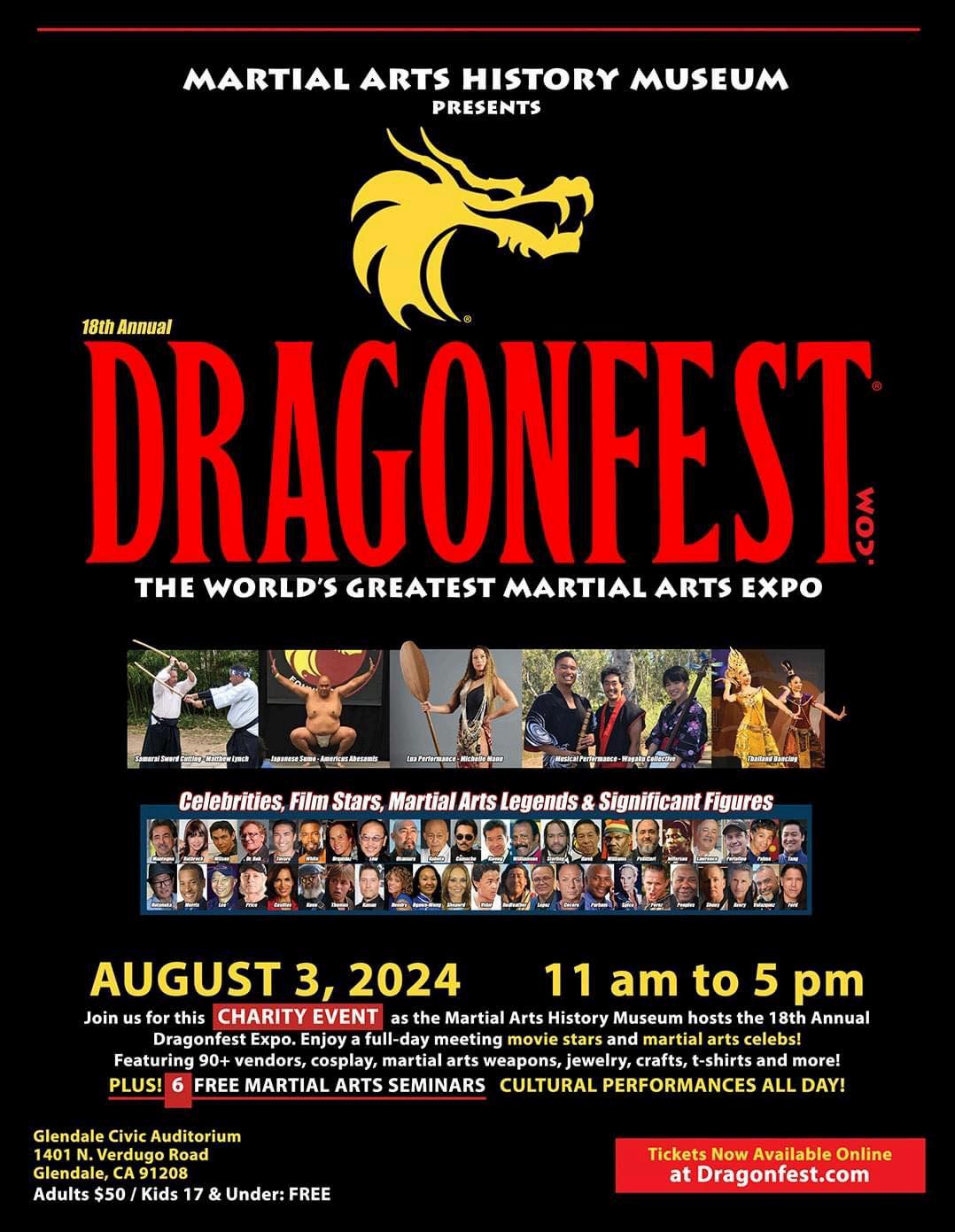

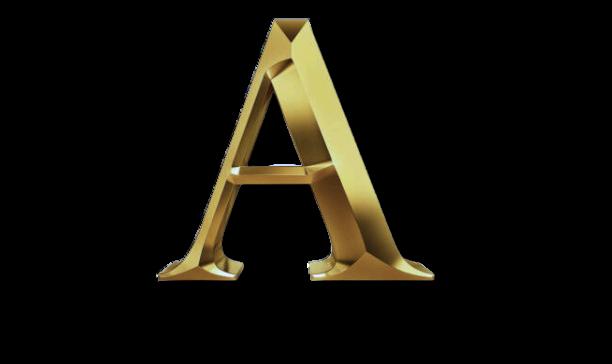























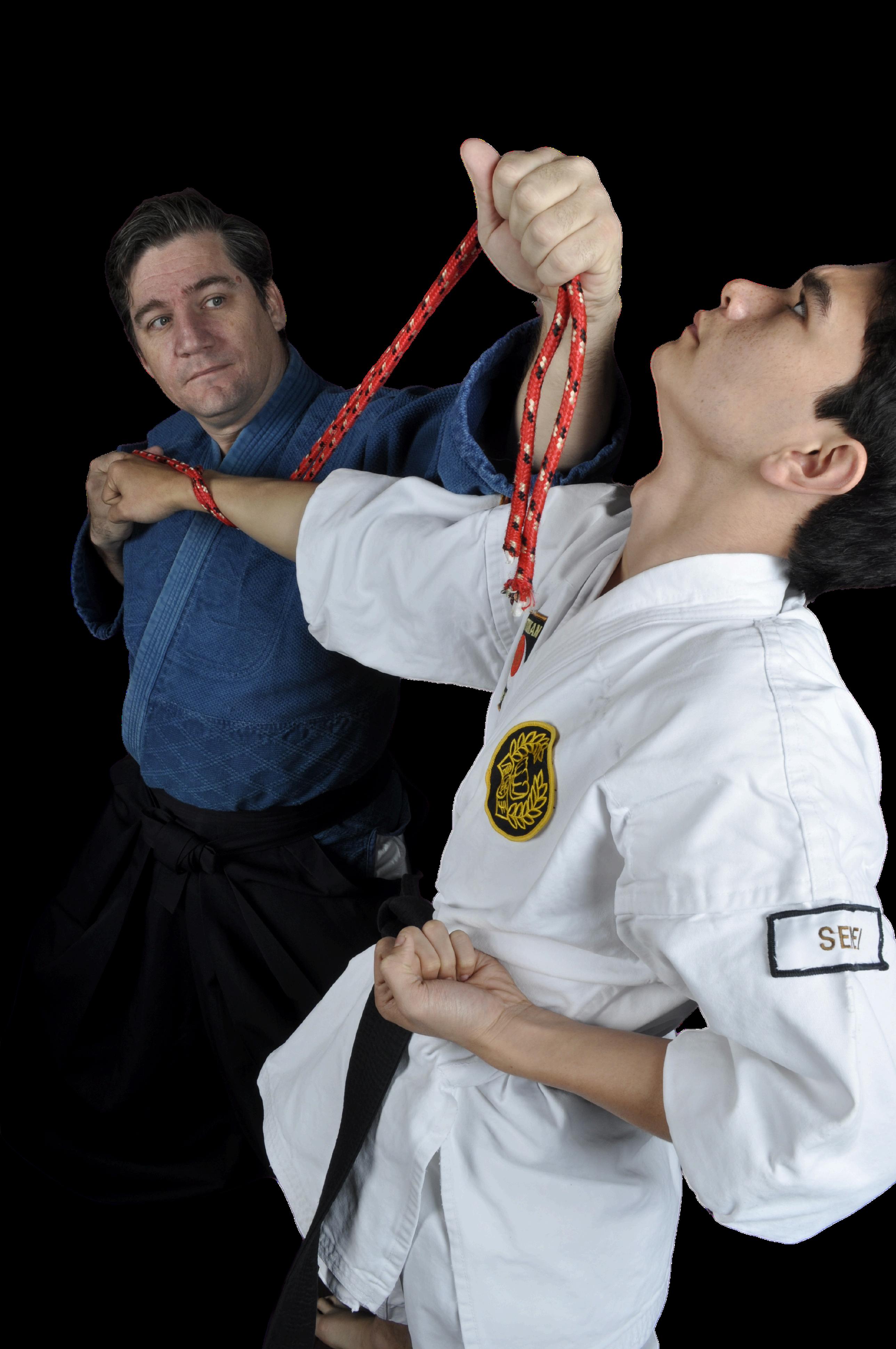


































On the cover of this month’s issue of INTERNATIONAL MARTIAL ARTS MAGAZINE
Shihan Allen Woodman
Teaching his unique style of Defensive Hojojutsu
Mitch Shimer
Joseph Miller
Frank Dux
Bohdi Sanders
Gary Dill
Philip cable
Sumiko Nakano
Scott Bolan
Allen Woodman
Creative Design
Allen Woodman
Marketing / Sales
Woodman
ARTS EAST Publications is the sole owner/manager of International Martial Arts Magazine 2024
In the professional capacity of INTERNATIONAL MARTIAL ARTS MAGAZINE (hereinafter referred to as "IMAM"), it is hereby clarified that the copyrights and provisions concerning publisher indemnification pertinent to the articles published within IMAM are extensively governed by the following declarations:
IMAM expressly disclaims any responsibility or liability for the content of columns or articles authored by independent columnists, including, but not limited to, the techniques and methodologies delineated therein The publication of any article within IMAM does not constitute an endorsement of its content.
All articles submitted and subsequently published in IMAM are done so with the full and discernible rights attributed to the respective author(s), under the principle that authorship confers exclusive copyright to the creator, unless explicitly stated otherwise in a contractual arrangement.
The engagement, practice, or training of any techniques, exercises, or movements demonstrated or advised within the scope of IMAM's published content is to be undertaken at the individual's discretion and risk. IMAM, inclusive of its publishers, editors, and contributors, assumes no liability for any injuries, damages, or other physical or psychological harm that may result from such endeavours
Readers are advised to approach the replication of any demonstrated techniques with caution and to consult with professional instructors or healthcare providers before embarking on any physical training or martial arts program highlighted within IMAM's publications. This statement is intended to provide clarity on the legal and professional stance of IMAM regarding copyright, content liability, and the assumption of risk by its readership IMAM remains dedicated to the dissemination of martial arts knowledge and culture, within the bounds of these defined terms.


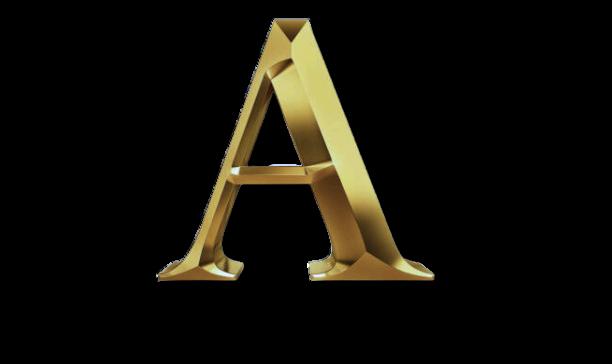




Allen
Frank
Bohdi
Sumiko Nakano
Allen
For artcles, columns or features please feel free tosubmit any written works directly to Artseastpublish@g mail com All submissions are accepted by not gauranteed publication with INTERNATIONAL MARTIAL ARTS MAGAZINE We strive for a true international input in to our magazine and encourage all levels of practitioners to submit on any relevant interest, martial arts, selfdefense related material Please include authors full name and brief biography along with return email for contact. If you care to advertise with IMAM please ocntact our adverising department directly Artseastpublish@g mail com














In the harmonious realm of martial arts, we find a tradition that effortlessly melds the ancient with the modern, bridging the past with our present and hinting at a future steeped in innovation and evolution. Martial arts, transcending its roots as mere forms of combat and self-defense, has matured into a deeply respected art form and a burgeoning industry. It’s a journey that has seen these disciplines adapt and flourish in the landscapes of modernity, where they serve not just as means of physical defense but as tools for mental well-being, cultural expression, and educational frameworks.
The story of martial arts begins in the cradles of ancient civilizations, where they were honed for warfare and personal protection. Over the millennia, these practices evolved, absorbing philosophical and spiritual dimensions
This transformation imbued martial arts with a depth that surpassed its martial origins, making it a pathway to personal growth, discipline, and spiritual enlightenment. In modern times, the essence of martial arts has expanded further, adapting to contemporary needs and sensibilities.




It has found a unique place in the fitness industry and in popular culture, thanks to the global spread of practices like Karate, Judo, Brazilian Jiu-Jitsu, and Taekwondo, among others. The cinematic world, particularly, has been instrumental in bringing the aesthetics and ethos of martial arts to a worldwide audience, weaving its principles with storytelling and entertainment.
The commercialization of martial arts has been a double-edged sword On one hand, it has made these practices more accessible to a broader audience, promoting physical fitness, self-discipline, and respect across cultures and age groups. On the other, some purists argue that its commercial aspects dilute the art's traditional values and depth.
Martial arts schools and dojos have sprung up in cities around the world, offering training in a myriad of styles.
Competitions and exhibitions, from local tournaments to global spectacles like the UFC, have turned martial artists into sports celebrities, further propelling the industry's growth.
As an art form, martial arts continue to celebrate the elegance of movement and the profound philosophies of its various styles. Practitioners often describe their training as a life-long journey of discovery, both of the self and of the art.
Looking ahead, martial arts is poised to continue its evolution. The integration of technology in training, from virtual reality (VR) simulations to data analytics for performance improvement, promises to usher in a new era of martial arts practice that could make training more personalized and effective.
At its core, however, the future of martial arts will likely remain rooted in its traditional values of respect, perseverance, and self-improvement.
New styles may emerge, blending elements from different traditions or incorporating modern understanding of physics and body mechanics.
Similarly, the mental and spiritual aspects of martial arts are gaining more emphasis, reflecting a collective yearning for mindfulness and inner peace in the fastpaced modern world
In summation, martial arts stand as a multifaceted phenomenon historically rich, culturally significant, and endlessly dynamic.
Whether as a form of self-defense, a fitness regimen, or a way of life, martial arts encapsulate the human spirit's indomitable quest for growth, understanding, and harmony.
Its journey into the future, while uncertain, promises to be as captivating as its storied past.

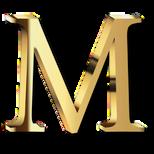


By The Real Frank Dux
Posers, on their best day, are sanctimonious blowhards claiming to be policing the traditional Asian-based martial arts industry. When they are visibly conniving and cowardly, defaming their rivals to make themselves feel and look relevant.
Posers will kiss ass, clout chase, act in accordance with plural approval. In stark contrast, independent thinking, displays of respect, and restraint with humility this is the recognizable signature traits of an authentic Asian-based Gendai (modern) or Koryu (pre-Mieji era) martial art professional
These visible attributes of behavior form the cornerstone of authentic Asian martial arts teaching, culture, and conduct.
Engaging in trade libel, slander, gossips, defamation, clout chasing, in seeking plural approval from others IS NOT consistent with the warrior mindset. So much so, this is elaborated upon in the story of the legendary “47 Ronin.”
This historical event in medieval Japan is utilized by knowledgeable teachers to impresses upon a student of traditional based Asian martial arts the reason as to why we must free ourselves from plural approval.
While also, restrict our inclination to judge or shame others, regardless, it may appear, well-warranted. Otherwise, we are just as immoral as those characters in that story who shamed, physically tormented, and rebuked the courageous 47 Ronin (masterless Samurai).



As it turns out, they had chosen to live in disgrace by failing to commit ritual suicide with their master when this was expected of them by their peers, adherents to the code of conduct of the Samurai, Bushido.
These 47 Ronin willfully had made themselves outcasts to spring a trap that brought about justice in their world.
The story of the 47 Ronin and many other examples like it has been passed down from one generation to the next to impart this uncompromisable martial art tenet of behavior: “We guard our tongue as we do our body! We do not harm unless we must.”
THEREFORE, NO GENUINE MARTIAL ART PROFESSIONAL WOULD EVER LEND AN EAR TO, REPEAT, OR CONDONE GOSSIP AND DEFAMATION: ONLY POSERS DO THIS!
Another grand tell of fakery is posers change alliances faster than changing soiled underwear.
Posers betray their teachers, friends, and/or past associates to become or remain popular. Noteworthy, loyalty is paramount in the genuine martial arts world. Furthermore, loyalty does not come with an escape clause in the Asian-based martial arts world. and whereas posers betray, they are faking it in their proclaiming: “Well, if he’s not guilty, I will stand by him.”
Genuine martial artists, above all, the professional, possess an unwavering sheepdog mentality. Particularly, are protective and steadfast when you are in the wrong.
That does not mean you should expect a genuine martial art professional to be remotely forgiving, understanding, or become an accessory to your bad acts. What you are entitled to and can expect from the real deal Asian based martial art professional is they will without being asked to, deliver the help to put you back in honor with yourself and others. Uplift you.
A true martial art professional does not earn their authority through popularity contests; being a dominator in the MMA and Sport Karate World; by having received numerous accolades and, certainly, not those dished out by bogus certificate, title and trophy issuing HALLS OF HONOR or DECEPTIVE Mail Order Catalogues with biased articles passing themselves off as being leading martial art trade journals.
For the most part, a “fake martial art luminary” is any person engaging in unsavory behavior (e.g. substance abuse; sexual exploitation/corruption of a minor, being associated with organized crime, etc.) that is the antithesis of the traits defining a martial art professional.



WELL INTENTIONED POSERS ARE CHALLENGING.
Dealing with a martial arts poser can be particularly perplexing because some well-intentioned people can become one without even realizing it.
You could be a poser if:
1. You regularly exaggerate your knowledge. Posers exaggerate their awareness and intelligence, so they are likely to jump on the bandwagon, spreading misinformation or gossip by repeating it. They will take credit for a good idea or start a trend by suggesting that they had that very same idea when someone else beat them to the punch.
2. You “pooh-pooh” someone’s idea and then restate that—person’s idea as if it’s your own—posers like to steal the show. One way to do that is to reject someone’s idea and suggest the same thing publicly.
In my own situation, I had dared to endure harsh criticism by defying convention. I founded Gendai (modern) martial art used in conjunction with traditional Shinobi—jitsu, aka Dux Ninjitsu, becoming the first American System of Ninjitsu. This personal experience highlights the real-life implications of poser behavior and the importance of addressing it within our community.
I was lambasted for it!
Ironically, this credit is appropriated from me by Stephan K. Hayes and his accomplice media outlets decades, later. Pigeonholing me along with other competitors while holding himself out to be solely legitimate, a falsehood. If you don’t want to be a poser, simply state your disagreement with the thought. Explain why it doesn’t work for you, and in lieu of a better idea, leave it at that!
3. You wait to see where the “leaders” of an industry opinion is given on any given subject before offering up your opinion. Posers like to be sure that they are aligned with those who will enhance their approval rating. So, they won’t offer an independent well thought out opinion. Not until they understand the position of who they think is popular. This backfires when asked to explain or defend their position.
A Poser displays behavior that deflects the topic of conversation by declaring it’s common knowledge; that we should look it up on google.
Also, feeling defensive, the poser resorts to using insults and sarcasm. They simply dismiss any contradictory evidence and all opposite points of view that aren’t popular or fits their skewed narrative.
If you don’t want to be a poser, offer your best ideas whenever you have them.



You’ll gain more points for insights and good thinking than you will by following the crowd and kissing ass of what are other posers.
4. You ensure that your opinion matches those you admire. Posers believe that mimicking the boss, leader, or any icon will earn them a favor, but this can backfire if others are not in tune with the kissing-ass nuance of the situation.
People who are knowledgeable and intelligent tend to offer an opposing view every now and again. Since they think critically and operate independently.
5. You routinely expound on or complicate simple ideas to appear smarter than you are. Posers like the sound of their own voice. They believe that they gain more influence if they steal the floor.
Regardless of their field of expertise, most genuine professionals see right through that show-stealing performance and grow tired and bored by the bombast.
If you don’t want to be a poser, keep the message simple and genuine.
If you see yourself being susceptible to becoming a poser and don’t want to turn into one, follow the advice provided. If you see these behaviors manifested by your cohorts, maneuver your way around them but in a positive way. Don’t gossip. Don’t lend an ear, either.
If you see yourself being susceptible to becoming a poser and don't want to turn into one, follow the advice provided If you see these behaviors manifested by your cohorts, maneuver your way around them but in a positive way. Don’t gossip. Don’t lend an ear, either. Otherwise, you stand to be found guilty by association.
Don’t end up that guy or gal who owns a skateboard but doesn’t really know how to skate. The inadequate pay a high price to chase the glory that comes to those who pursue and acquire knowledge and skill. Why we say in Dux Ryu, We Keep It Real.” –
Frank Dux
The father of American Karate, Ed Parker, proclaimed “Frank Dux is to martial arts what Babe Ruth to baseball ” The Head of Family Black Dragon Fighting Society, Lawrence Day, says “Frank Dux is the most talked about Black Dragon and why wouldn’t he be when Dux is the best-known combat martial artist in the modern age.
Dux is no-holds-barred champion with impressive world records, still standing decades later. He is a source contributor in creating US Navy SEAL Combat Fighting Course and secret fighting manuals of elite Anti-Terror units worldwide.” sated, “The brand name UFC was appropriated away from Dux whose moniker was The Ultimate Fight Champion.” Frank Dux shares wisdom gained from his unique experience and controversy for IMA.





Bohdi Sanders, Ph.D.
If you are only training in your martial art to learn to fight or to learn self-defense, you are spending a lot of time learning something that you may never use This may sound strange coming from a martial artist of 40 years like me, but it is true, nonetheless. That is not a very good return on your time, effort, and money While it may make you feel good about your selfdefense skills, you won’t use those skills 99.9% of the time.
The physical part of your martial arts training, with the exception of staying in shape, is much like buying insurance. You may never have a car wreck or have your house burn down, but it is important to have insurance, just in case.
Likewise, the physical aspect of your martial arts training is insurance for that rare occasion when you are forced to use your martial arts skills to defend yourself or someone else.
Don’t get me wrong. It is vitally important that every warrior keeps his martial arts skills sharp. You never know when you will be left with no other choice except to use your martial arts training to defend yourself or someone else. You must stay sharp!
That said, unless you are in the military or work in law enforcement, etc., you will likely not use your martial arts skills much at all outside the dojo or in a tournament. Sure, it helps keep you fit, but shouldn’t your training be helpful in other ways as well?



What about the 99.9% of the rest of your life? Shouldn’t your martial arts training also be useful in your everyday life?
That is where balance is important in your training.
Musashi understood this. He stated that we should practice our martial arts so that they will be useful at any time and in all things. This means that there must be more to your martial arts training than just learning to fight or defend yourself.
This goes with what I have been teaching for over 20 years. While the warrior philosophy that I teach definitely espouses learning to defend yourself, it is also about being successful in all areas of your life.
That is why over half of my readers are not martial artists; I teach martial arts and warrior philosophy to benefit almost everything you do and everyone who applies my teachings to his or her life.
“The true science of martial arts means practicing them in such a way that they will be useful at any time, and to teach them in such a way that they will be useful in all things”.
This goes with what I have been teaching for over 20 years. While the warrior philosophy that I teach definitely espouses learning to defend yourself, it is also about being successful in all areas of your life That is why over half of my readers are not martial artists; I teach martial arts and warrior philosophy to benefit almost everything you do and everyone who applies my teachings to his or her life
After he stopped fighting sword duels to the death, at around 30 years of age, Musashi realized that there was much more to life than fighting He became a master of the tea ceremony, a master painter, a meditation master, a master teacher, and an amazing author whose works have lasted almost 400 years.
Miyamoto Musashi
You can bet that he used his martial arts practice in each of those practices. When taught correctly, martial arts teach you to defend yourself and live a life of excellence in every way They also teach self-discipline, patience, endurance, self-control, selfconfidence, reading people, and much more, all of which are useful in everyday life.
When someone disagrees with this philosophy, I ask the following questions:
How many times have you had to fight for your life in the last week?
The last month?
The last year?
Have you ever had to fight for your life?






Most of the time, the answer to these questions is almost always none. Then I ask, how many times have you had a chance to compromise on your honor or code of ethics?
Of course, we all have daily opportunities to compromise our honor and integrity. We can lose our patience, lower our standards, lose our temper, slack off and be lazy, etc. What’s the point of those questions? They demonstrate how important the other aspects of our martial arts training are, and how much more we use them than our selfdefense skills.
If not, you are not getting complete training.
Yes, I know that it is hard to fit all of that into an hour of training, but why are most martial arts classes only an hour? The answer is because that is the most convenient and economical way to run a martial arts business. It is about making money.
I have nothing against making money. But if you are not getting more than the physical side of the martial arts, you are missing out on a lot of important aspects of the martial arts and warrior training.
A martial art taught correctly is the perfect combination of the mind, body, and spirit. Bohdi Sanders
Let's be clear Our self-defense skills are undeniably important. However, the character traits we develop through training are equally crucial and are likely to be used more frequently than our self-defense skills. As a martial arts instructor, it's your responsibility to ensure your classes are beneficial in all aspects of your students' lives, not just in self-defense, exercise, or sports And as a martial arts practitioner, it's your duty to integrate your training into your daily life, making it a part of who you are
This means that you must be very selective when choosing a martial arts instructor or a dojo to train. Does your instructor teach character traits, honor, integrity, discipline, de-escalation techniques, meditation, endurance, self-control, courtesy, courage, how to read people, how to walk away from an explosive situation before it goes too far, etc.?
Teaching these character traits is vital to training a complete, well-rounded martial artist. And, if someone doesn’t have these traits, there is no way that he or she will be able to make their martial arts useful in all things or at any time. The character training and philosophical side of the martial arts is a must!
Many students are not taught these things at home. Even many of the parents were never taught these things Knowledge of honor, integrity, courage, etc., is becoming more and more rare in today’s world. This is a shame, but it is true, nonetheless.
If you are a martial arts instructor, you have an extremely important role to play in the lives of your students. They look up to you and look to you for guidance, not only in the martial arts, but in life.



They look up to you and look to you for guidance, not only in the martial arts but in life Don’t disappoint them by being more concerned with money than building men and women of character, honor, and integrity.
If you are being taught correctly, there’s more to the martial arts than meets the eye. If you ’ re not being taught correctly, maybe it is time to find a new instructor. Martial arts classes that do not integrate warrior philosophy are incomplete
A martial art taught correctly is the perfect combination of the mind, body, and spirit. It is about finding balance in all aspects of your life. As Shoshin Nagamine taught, “Any martial art without proper training of the mind turns into beastly behavior.”
If your instructor doesn’t teach these things, and you can’t find one that does, train yourself. Get good books on martial arts and warrior philosophy. Train smart and make your martial arts training useful in all areas of your life, not just self-defense. Warrior up!
Bohdi Sanders has been a martial artist for over 40 years and is the author of 17 books on martial arts and warrior philosophy. His books are available on: www.TheWisdomWarrior.com and on Amazon. Bohdi can be reached at: WarriorWisdom@comcast.net.

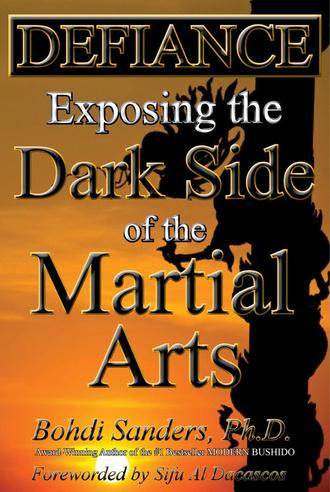










KIAI (Kihap or kyap -Korean, sometimes and hangul or hanja) is the consequence of a special kind of breathing. It is usually said that it is a guttural sound, but the right KIAI comes from the abdomen as a result of strong expiration. The real KIAI is the consequence of the unconscious part of the human being, and it is not deliberately provoked.
The breathing technique helps people with depression to relax and calms them down. One of the best ways to breathe is the technique in which a slow inhalation is carried out through the nose while you count up to three, followed by a shorter pause, and a slow release on the mouth with a count of six.
KIAI is largely connected to the proper breathing because the right KIAI means the proper expiration, and only the proper expiration enables the proper inhalation. Moreover, the contraction of abdominal muscles while exhaling strengthens the trunk, i.e. the pelvis as the axis around which extremities rot rotate.






Zen masters also used the technique of strong guttural expiration to explain ideas to their disciples, and they called it KATSU. It is impossible to determine with certainty the influence of Zen philosophy and Do or Tao philosophy on the development path of KIAI shout (breathing technique).
Dan Tien is a Chinese name for the central point of the human body, which is located just below the navel, and they equate that it affects breathing. The Japanese name for the same point is HARA.
The Greek name for this point is pneuma (airflow, breath, or life forces). Some martial arts experts believe that the kiai breathing technique originated in India, while others believe it originated in China. According to one theory, such a technique originated in Korea. However, none of these theories have been scientifically proven.
By observing human movement or stillness in a short time interval, one can see two basic possibilities for man's relationship to the surroundings in which he finds or doesn't find support. The complete expiration lowers the unconscious brunt of the body in the surroundings where we find ourselves, while we strengthen the central part of the body around which peripheral attachments circulate under the impact of the force of muscle contraction. All the life phenomena are connected to the process of oxidation or reduction, i.e. without oxygen there is no life.
The supply of our cells depends on blood and oxygen transport by blood. While contracting, the muscle gets up to ten times more blood than when it rests, thus taking more oxygen and glikogen. The input of oxygen is just one function of exhaling function which also covers the rejection of CO2. The cells become free of waste products so that they release them into blood, and this cleansing particularly takes place in the lungs. To sum up, the complete expiration, i.e. KIAI is the condition without which there is no right and complete inhalation.
The volume of air that lungs can take is called “the vital capacity“. The aim of numerous breathing techniques is to enlarge that capacity. Nevertheless, before enlarging it to the maximum we should use the amount we already have as the result of strong expiration (KIAI). The movements of the diaphragm and the chest speed the venous circulation in the whole organism. The muscles of the diaphragm are ones of the strongest in the human body. The expiration KIAI which consists of AU, AI, OI or EI makes the whole skeleton of the thorax vibrate, which proves that vibrations are transferred to the air mass closed in the lungs so that the gentle membrane of alveoli in contact with the air vibrates stimulating pulmonal cells gases replacement.
The more recent works of Western physiologists report that this vibration has a very noticable effect on endocrine glands, which science pay more attention to.




It has been proven that the emission of vowels during the exhaling (KIAI) causes a vibratory self-massage of organs. These vibrations reach to the deepest tissues and nerve cells enlarging the blood circulation in the organs.
Endocrine glands that send hormones directly into blood and lymph are getting stimulated (the pituary, the thymus, the adrenal gland etc.) as well as sympaticus and the brain nerve subject to this useful influence of vocal vibrations. The vibromassage is particularly important for the organs situated in the thorax and the abdomen. Such vibrations create electromagnetic waves which spread throughout the organism thus enlarging the dynamics of living. Under the impact of this internal vibration the man gets rid of depression, the inferiority complex, and achieves mental balance.
Practising martial arts not only relieves and removes depression but also greatly prevents its return. Certainly one of the most effective exercises is the breathing exercise, whether it is a known technique of breathing yogapranayama, or similar breathing technique - uyai, or kung-fu breathing technique -chi kung, or karate technique -kokya (aikido, tae kwon do) or breathing technique with the emphasis on exhalation technique – KIAI (kihapKorean). The use of breathing and breath control has a long history in the traditional martial arts (KIAI jutsu).
Most martial arts pay attention to a special breathing technique. Such a technique is performed in kung- fu (chi kung, tai chi chuan, pa qua etc.) in karate (for katas-sanchin, tensho, when performing strikes etc.), in tae kwon do (forms, when performing strikes etc.), but also in aikido, hapkido, kendo, judo, ju jutsu, nin jutsu , kobudo, naginata and many others. In kendo, for example, a point is only given by the referees if the hit is accompanied by a strong, convincing KIAI. In karate a KIAI can show that you had the correct intention to score, which is one of the criteria for achieving ippon. For these reasons, it is important to develop a good kiai.
The right breathing implies deep breathing caused by diaphragm and chest movement. It is also important to expire completely, which enables the next complete breath. The right breathing technique is practised at the very beginning of martial art practice and many trainers emphasize its importance. Basic training for the KIAI involves different breathing exercises, of which there are many similar to the Pranayama practices of India.
The appropriate breathing technique reduces muscle tensions which causes the right muscular distribution. Frequent martial arts practice reduces weight. Obese people have the problem that fat tissues reduce breathing functions and can cause respiratory inflammation.



The breathing technique helps people with depression to relax and calms them down. One of the best ways to breathe is the technique in which a slow inhalation is carried out through the nose while you count up to three, followed by a shorter pause, and a slow release on the mouth with a count of six. The breathing can be performed so that we breathe first and then later, through the other nostril. Another method of breathing is the more powerful inhalation of the nose, followed by the more powerful exhalation of the mouth. The inhalation is followed by a strong exhalation after which athletes practice various punches that are accompanied by a loud kiai (kihap).
By practicing martial arts trainees strengthen chest muscles thereby improving lung function. This applies not only to the arts; kung-fu, karate, tae kwon do, kendo and aikido, which in practice require a certain special breathing technique.
In other martial arts and skills such as judo, BJJ, sambo, boxing, kickboxing, wrestling, and mixed martial arts and the like, trainees not only develop the upper body, especially the arms, and shoulders but also strengthen the muscles of the chest, which positively affects the breathing function. Which is closely related to the KIAI technique.
As the air comes from the lungs (KIAI) and makes the vocal cords vibrate, it completely occupies the consciousness, which results in a direct economy of nerve impulses or available energy for other things.






It is the best way to get rid of irritability and get back stability and peace. After all, doesn't music provoke various emotions by means of vibrations? Just enough to understand KIAI - the strong shout.
The first book that mentions the Japanese martial art of Kiai jutsu was translated in 1911 (Kiai-jutsu, Sakkatsu Jizai, by Kumashiro Hikotaro), when the martial art became more popular among the people – the art of KI - AI.
KIAI has got a unique and noted role in martial arts. KIAI is used in the fight while performing strikes, it is used in KATA, as well as in breaking techniques TAMESHIWARI (KYOK PA -Korean). Some movements in kata require from the practitioner an exceptional balance, the others endurance and breathing control. Breathing is here a very important link between physical and mental moves. KIAI is rarely but sometimes used in some styles that use certain internal energy.
Also, the breathing technique while performing the katas (forms) varies across styles. In Karate the breathing is deeper, slower and oriented towards the abdomen (Ibuki), while in many Kung Fu styles the breathing is much faster and more shallow. Certain deviations in the breathing technique exist the same way as in Karate styles and Kung Fu styles. Also, minor but also visible variations in breathing techniques exist even among masters of a certain style which depends on the person. Every master will alter a certain style and breathing technique to his own needs.
KIAI is also applied in self defence- when we want to intimidate the opponent or encourage ourselves and, therefore, prepare for the fight (spirit yell). Thus the strike and the defence will be more efficient. KIAI can be rather loud (scream) or quite silent (breathing out), it can be longer or shorter depending on a certain person and situation. Although some believe that there are only four basic types of KIAI performance ; loud, screaming (high), normal (semi-loud) and silent (names kensei). In reality there are many more different ways of performing KIAI – breathing technique.
In some martial arts the application of KIAI breathing technique is highlighted in the names of these disciplines, e.g. in China the style TAI CHI (CHI, Japan- KI), in Japan – AIKIDO (AI-KI-DO), IAI DO (KENDO), in Korea – HAP KIDO (HAP-KIDO) or KUK KI TAE KWON DO etc. Also such a breathing technique is known as KIAI JUTSU and is closely related to technique AIKI JUTSU and KYUSHO JUTSU. According to some historians, the KIAI technique began to be used in Japan around 1400 years ago, first in swordsmanship.
Therefore, KIAI breathing technique is used in karate, judo, kung-fu, kendo, jujutsu (KIAI jutsu), tae kwon do (kihap or kyap), also in wrestling (when throwing the opponent), boxing and kick-boxing (when performing strikes), fencing as well as in lots of other martial arts.



We can say that breathing technique Kiai jutsu or Kipahsul (Korean) is the shout - used as a Weapon. With a certain KIAI technique, a martial arts master can frighten, paralyze and even knock down his opponent (famous Japanese skill Kiai jutsu or Chinese Noi chun or Korean Kipahsul) .
The technique of breathing with a loud exhalation (shout) is known in many nations. It was used by ancient Vikings, Maori, Scots, Mongols, Chinese, American Indians, Mexican soldiers, various Russian tribes, and many others. One of the funniest KIAI is in old Maori dance form Haka, but it is certainly KIAI.
It is interesting that the strong scream (KIAI) can be heard from various sportspersons not only in martial arts but in other sports, too. Some examples are: athletes (shot putters, javelin throwers etc.), weightlifters, as well as skiers (when leaving the start). The loud scream (KIAI) can also be noticed in tennis when players run a stronger shot, but it is not the only case. Many athletes give a scream of support to his team or a scream (shout) of victory.
All of the above goes for the thesis that the real KIAI is not the consequence of willing to act. On the other hand, it is true that it can be trained and perfected.
As soon as you have started thinking about correct breathing as well as its importance for your body, you have already profited.
Enough to understand KIAI – the powerful shout!
David “ Sensei“ Stainko, the Master of Kinesiology and senior organizer of kinesiological recreation was born in Rijeka, Croatia in 1962. In 1980 he enrolled at Zagreb University, Croatia to study Kinesiology and he got his M.A. degree there.
David Stainko has been active in martial arts since 1972 He started training in Budokai Club Rijeka.
In1978hefoundedtheYouthBudokaiClub, whichlaterchangeditsnameintoTheClubof MartialArtsVictoria.Itwasregisteredasthe firstofitskindinformerYugoslavia(where Croatiawasoneoftheconstituentparts)and oneofthefirstinEurope.
The year 2018 will bring him the master title of 8th DAN at the age of 55+ and 45 years of practising and studying of martial arts .







Naginatajutsu, the Japanese martial art of wielding the naginata, embodies grace and power. With its curved blade and long shaft, this pole weapon has a rich history from feudal Japan, used by samurai and onna-bugeisha for its effective reach and strikes.
Combining the qualities of a sword and polearm, the naginata evolved into an art form emphasizing precision and control. Today, it is celebrated for its beauty and effectiveness in martial arts.
This article explores the history, components, variations, and key techniques of naginatajutsu, providing a comprehensive overview of this enduring discipline.
Naginatajutsu originated in feudal Japan Samurai favored it for its reach and versatility, which gave it a tactical advantage in battles against swordsmen and cavalry. Prominent in the Kamakura period (1185–1333), the naginata disrupted enemy formations. As firearms evolved, it became a symbol of martial prowess
In the peaceful Edo period (1603–1868), the naginata’s role shifted to martial arts training and self-defense, especially for onna-bugeisha, female warriors trained to protect their homes
What is a Naginata?
Description of the Naginata: Its Components
The naginata is a traditional Japanese pole weapon that combines the elements of a sword and a spear. Its most distinctive feature is the curved blade, typically mounted on a long wooden shaft. The blade can vary in length, but it is generally around 30 to 60 centimeters (12 to 24 inches) long. The shaft, often made from oak or other hard woods, ranges from 120 to 240 centimeters (4 to 8 feet) in length.



WRITTEN BY SUMIKO NAKANO

The components of the naginata include:
Blade (Naginata-no-ha): The sharp, curved blade designed for slashing and cutting. It often has a single edge and is crafted with precision to maintain sharpness.
Shaft (Ebu): The long pole to which the blade is attached. It provides leverage and reach, making the naginata effective in combat
Tsuba: The guard between the blade and the shaft, which protects the hands from sliding onto the blade.
Ishizuki: The metal end cap on the bottom of the shaft, used for striking or as a counterbalance to the blade.
Today, the naginata is primarily used in martial arts practice and competitions. Naginatajutsu has evolved into a structured discipline with kata (pre-arranged forms) and sparring exercises Practitioners train in techniques that emphasize control, precision, and fluidity.



Beyond its martial applications, the naginata holds significant ceremonial value. It is often used in traditional Japanese ceremonies, festivals, and demonstrations.
The weapon symbolizes Japan's rich cultural heritage and the samurai's enduring legacy. In these contexts, the naginata is not merely a tool of combat but a representation of artistry, discipline, and history.
Jodan no Kamae (High Guard Stance)
Explanation of the High Guard Stance
Jodan no Kamae, or the high guard stance, is one of the fundamental positions in naginatajutsu.
In this stance, the practitioner holds the naginata above their head, slightly forward. The rear hand grips the bottom of the shaft, while the front hand is positioned closer to the blade, providing control and leverage.


and

Historically, Jodan no Kamae allowed warriors to deliver powerful downward strikes, making it effective against opponents in lower stances or on horseback. The elevated position provided a psychological advantage, demonstrating the angle of the blade readiness and confidence.
The training benefits of practicing this stance include building upper body strength and improving posture. It also enhances the practitioner’s ability to generate power from the shoulders and hips, which is crucial for delivering effective strikes.



Hasso no Kamae (Side Stance)

Description of the Side Stance Hasso no Kamae, or the side stance, involves holding the naginata vertically beside the face. The blade is positioned upward, ready to strike or defend. This stance provides a balanced posture that allows for quick transitions between offensive and defensive movements.
Uses in Both Offensive and Defensive Maneuvers This stance is versatile, allowing practitioners to launch rapid strikes or parry incoming attacks. The vertical positioning of the blade makes it easier to block highline attacks and swiftly counter with a follow-up strike.
Strategic Advantages Hasso no Kamae offers strategic advantages by masking the practitioner’s intentions. The vertical blade can obscure the opponent’s view, making it difficult to predict the next move. This stance also facilitates quick, fluid transitions, crucial in dynamic combat situations.

Tobi Nage (Leaping Throw)

Description of Dynamic, Airborne Techniques Tobi Nage, or leaping throw, is a dynamic technique that involves a powerful leap towards the opponent to deliver a decisive strike. This airborne move utilizes the practitioner’s full body weight and momentum, increasing the force of the attack.
Importance of Agility and Surprise in Combat The effectiveness of Tobi Nage lies in its speed and element of surprise. By leaping, the practitioner can close distance rapidly, catching the opponent off guard.



This technique requires exceptional agility and timing to execute correctly.
Training Methods to Perfect the Leap
Training for Tobi Nage involves plyometric exercises to build explosive strength and improve jumping ability. Practitioners also focus on balance and coordination to ensure a smooth, controlled landing Drills often include practicing the leap from various distances and angles to enhance versatility in combat scenarios
Conclusion
Naginatajutsu remains vibrant, respected for its historical roots and technical prowess. Modern practitioners worldwide blend traditional techniques with contemporary methods, mastering stances like Jodan no Kamae and Waki Gamae Ceremonial aspects highlight its cultural significance, bridging past and present.
Through dedicated training and respect for tradition, practitioners keep this ancient art alive, ensuring the naginata remains a symbol of martial prowess and cultural heritage
Whether in combat or ceremony, the naginata continues to inspire and command respect, standing as a timeless emblem of Japanese martial arts.
Sumiko Nakano , a dedicated MMA fighter and traditional martial artist, resides in the vibrant city of London, England, while her roots trace back to the culturally rich Osaka, Japan. Apart from her prowess in combat sports, she is a talented writer, known for her work "Shadows of the Naginata".
We are delighted to announce that Suniko Nakano will be joining the prestigious International Martial Arts Magazine as a new contributing member. Her insightful contributions are set to enrich the global martial arts community, reflecting her deep family ties to the world of martial arts.
Stay tuned for Suniko's upcoming articles in the International Martial Arts Magazine, where she will delve into the fascinating realms of weaponry and the captivating history of martial arts. Don't miss out on the opportunity to explore her unique perspective and expertise in the forthcoming issues of IMA.









Written by Allen Woodman
In the intricate weave of Japan's martial arts tapestry, Hojojutsu occupies a unique and fascinating strand.
This traditional form of rope bondage has roots deeply embedded in the feudal era, serving as a testament to the ingenuity and cultural distinctiveness of Japanese martial practices. Its evolution, principles, and application provide a riveting narrative, showcasing not just a martial art, but a historical artifact that has survived the relentless march of time.
Shihan Allen Woodman has trained extensively in several schools of theory in this art form. Having lived and trained in Japan for more than 20 years, Allen brings a unique perspective to the training and application of traditional Hojojutsu





p g
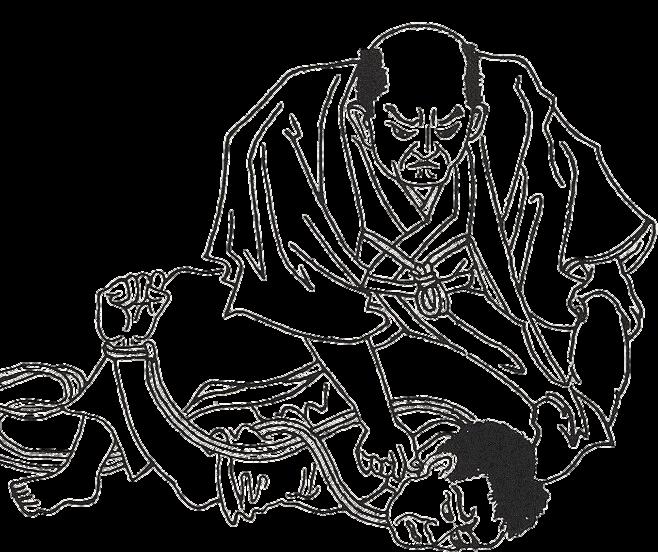
Hojojutsu began its journey during Japan's feudal period, a time when warriors sought not only to defeat their enemies but to capture them with honor.
The art's genesis can be traced back to the samurai, who valued the capture of high-ranking adversaries alive to either ransom them or hold them for political leverage As such, hojojutsu emerged as a critical skill on the battlefield, enabling the samurai to subdue and restrain without causing unnecessary harm

The transition from the battlefield to civil society saw hojojutsu adapting to the needs of peacekeeping. During the Edo period (1603–1868),
Japan experienced an era of relative peace under the Tokugawa shogunate. This period allowed the martial arts to flourish, with hojojutsu being employed by law enforcement officers, known as 'torimono sandogasa,' to arrest and detain without lethal force.
The use of rope, an easily accessible and versatile tool, made hojojutsu a practical choice for these officers



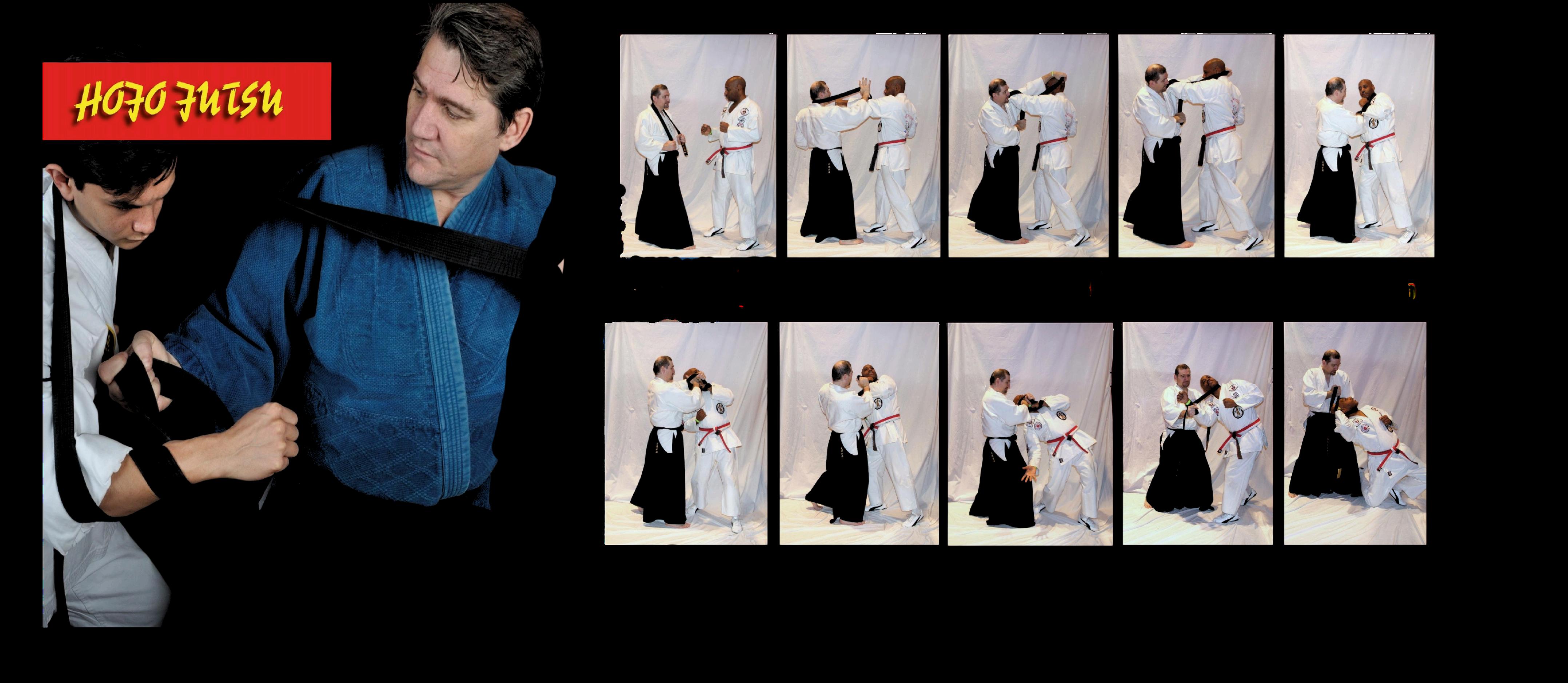
Hojojutsu is characterized by its strategic application, which reflects a profound understanding of human anatomy and psychology. Practitioners, known as hojojutsuka, employ various lengths and types of rope to execute techniques that can neutralize an opponent swiftly and efficiently.
The art is divided into two main categories: hayanawa (fast rope), used for quick capture and immobilization, and honnawa (main rope), intended for more secure and long-term restraint. and human insight.

The practice of hojojutsu is as much an art as it is a science. Its techniques are meticulously designed to respect the captured person's dignity while ensuring they remain incapacitated.
This duality of purpose—simultaneous restraint and respect—mirrors the samurai code of ethics and underscores the cultural depth of hojojutsu.
Hojojutsu Today.
Although no longer employed in law enforcement or warfare, hojojutsu has not vanished into the annals of history.




Instead, it has transitioned into a ceremonial and educational practice, preserved by martial arts historians and enthusiasts who recognize its cultural and historical significance.
Modern practitioners’ study hojojutsu not only for its physical techniques but also to gain insight into the feudal Japanese mindset and the era's social order.
As a martial art, hojojutsu offers a captivating glimpse into Japan's past, reflecting the ingenuity, discipline, and artistry of the samurai.



IIts survival and continued practice stand as a tribute to the timeless values of respect, restraint, and honor —principles that transcend the boundaries of time and culture.
Hojojutsu may no longer echo on the battlefields or in the streets of Edo, but its legacy endures, woven into the very fabric of Japan's martial heritage.
For those who seek to understand the soul of samurai culture, hojojutsu offers a thread that, once pulled, unravels a narrative rich with history, art, and profound human insight.



37 July 2024 / Vol 1 - No 5


Instead, it has transitioned into a ceremonial and educational practice, preserved by martial arts historians and enthusiasts who recognize its cultural and historical significance.
Modern practitioners’ study hojojutsu not only for its physical techniques but also to gain insight into the feudal Japanese mindset and the era's social order.
As a martial art, hojojutsu offers a captivating glimpse into Japan's past, reflecting the ingenuity, discipline, and artistry of the samurai.



IIts survival and continued practice stand as a tribute to the timeless values of respect, restraint, and honor —principles that transcend the boundaries of time and culture.
Hojojutsu may no longer echo on the battlefields or in the streets of Edo, but its legacy endures, woven into the very fabric of Japan's martial heritage.
For those who seek to understand the soul of samurai culture, hojojutsu offers a thread that, once pulled, unravels a narrative rich with history, art, and profound human insight.



In the traditional Art of Hojojutsu each discipline holds its unique charm and complexity, therein lies an art form shrouded in mystery and exclusivity.
Traditionally guarded and passed down within the confines of separate schools to protect its techniques from falling into rival hands, Hojojutsu has remained elusive to the broader martial arts community. However, Shihan Allen Woodman, a revered figure in the martial world, is bringing this ancient art to the forefront, teaching the defensive, fast-rope (hayanawa) system of Hojojutsu in a manner that is as innovative as it is accessible.
Originally, Hojojutsu was conceived as a method to restrain attacking enemies, with specific knots and ties designed to keep the techniques secret from adversaries. This ensured that if a samurai were captured, their captors would not readily understand how to undo the bindings, giving the samurai a possible chance to escape. Because of its strategic importance, Hojojutsu was closely guarded within schools, creating a veil of secrecy around the art form.

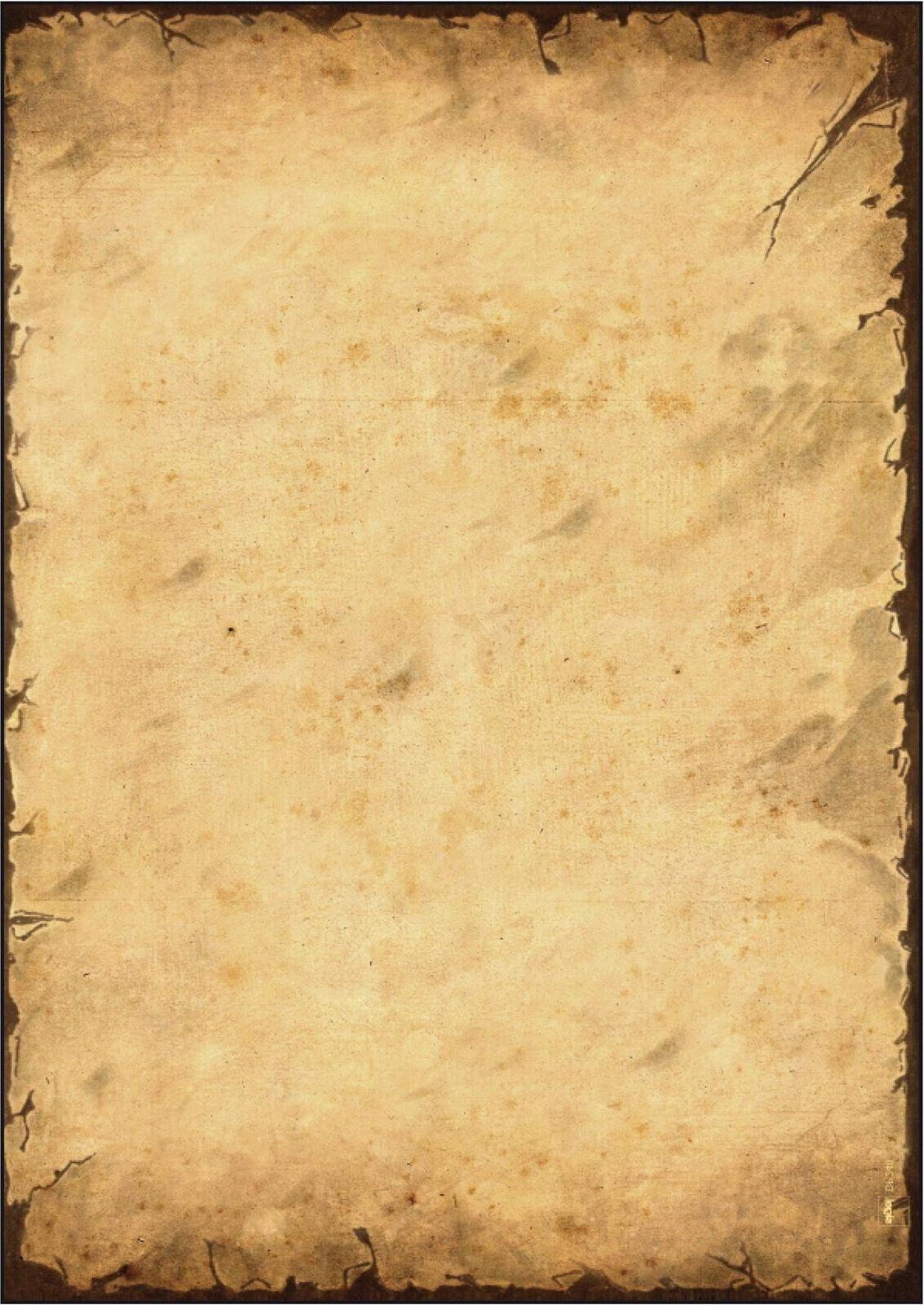




In an era of openness and global sharing, Shihan Allen Woodman embarks on a mission to demystify Hojojutsu, making it accessible without diluting its essence and tactical wisdom.
Focusing on the hayanawa, or "fast rope," system, Woodman adapts Hojojutsu’s ancient techniques for modern self-defense applications, ensuring that the art remains relevant in today’s context
Shihan Allen Woodman's approach to Hojojutsu is refreshing and revolutionary. He advocates using everyday items as potential tools for self-defense, in line with the core principles of Hojojutsu
This makes the art form not only practical but also highly adaptable to contemporary situations where conventional weapons or tools might not be readily available. Imagine transforming the humble necktie, the belt cinching your waist, or even the strap of your purse or bag into an instrument of protection. Wired earphones, easily found around the necks or in the pockets of many individuals, become more than just a gadget for music but a line of defense
Even articles of clothing like T-shirts, jackets, or a regular shirt, once removed, enter the arsenal of improvised Hojojutsu tools under Woodman’s guidance.
Woodman teaches an eclectic brand of defensive Hojojutsu, focusing on practicality and immediate application His students learn not only the techniques but also the underlying philosophy of using restraint with respect, turning potential threats into a showcase of skillful defense without escalating violence unnecessarily.
This new chapter in Hojojutsu’s history, led by Shihan Allen Woodman, emphasizes the art's adaptability and relevance. Gone are the days when Hojojutsu’s secrets were closely guarded mysteries
Today, under Woodman’s tutelage, it becomes a living, breathing art form that empowers individuals by highlighting the potential of the everyday to ensure safety and security
In ever increasing popular culture the use of defensive hojojutsu can be seen in various hit Hollywood films, such as The Accountant (Starring Ben Affleck), Non-Stop (Starring Liam Neeson) , and the blockbuster franchise film John Wick (Starring Keanu Reaves)



As a modern ambassador of Hojojutsu, Woodman carries forward the legacy of an art steeped in the samurai tradition His innovative approach melding meticulous historical research with practical application has ignited a renewed interest in Hojojutsu.
Under his tutelage, practitioners find themselves engaged in more than just learning a martial art; they embark on a journey through time, exploring the rich tapestry of feudal Japan and the timeless virtues of the samurai spirit.
Beyond the mats and dojos, Woodman's influence permeates through his writings and instructional videos, offering enthusiasts worldwide a chance to dive into the intricacies of Hojojutsu
In the dynamic world of martial arts, Shihan Allen Woodman stands as a pillar of tradition, bridging the past and present through the art of Hojojutsu His story is not just about the revival of an ancient art; it's about inspiring a new generation Lessons of respect, discipline, and the graceful power of the binding art
For more info check out hojojutsu.yourwebsitespace.com
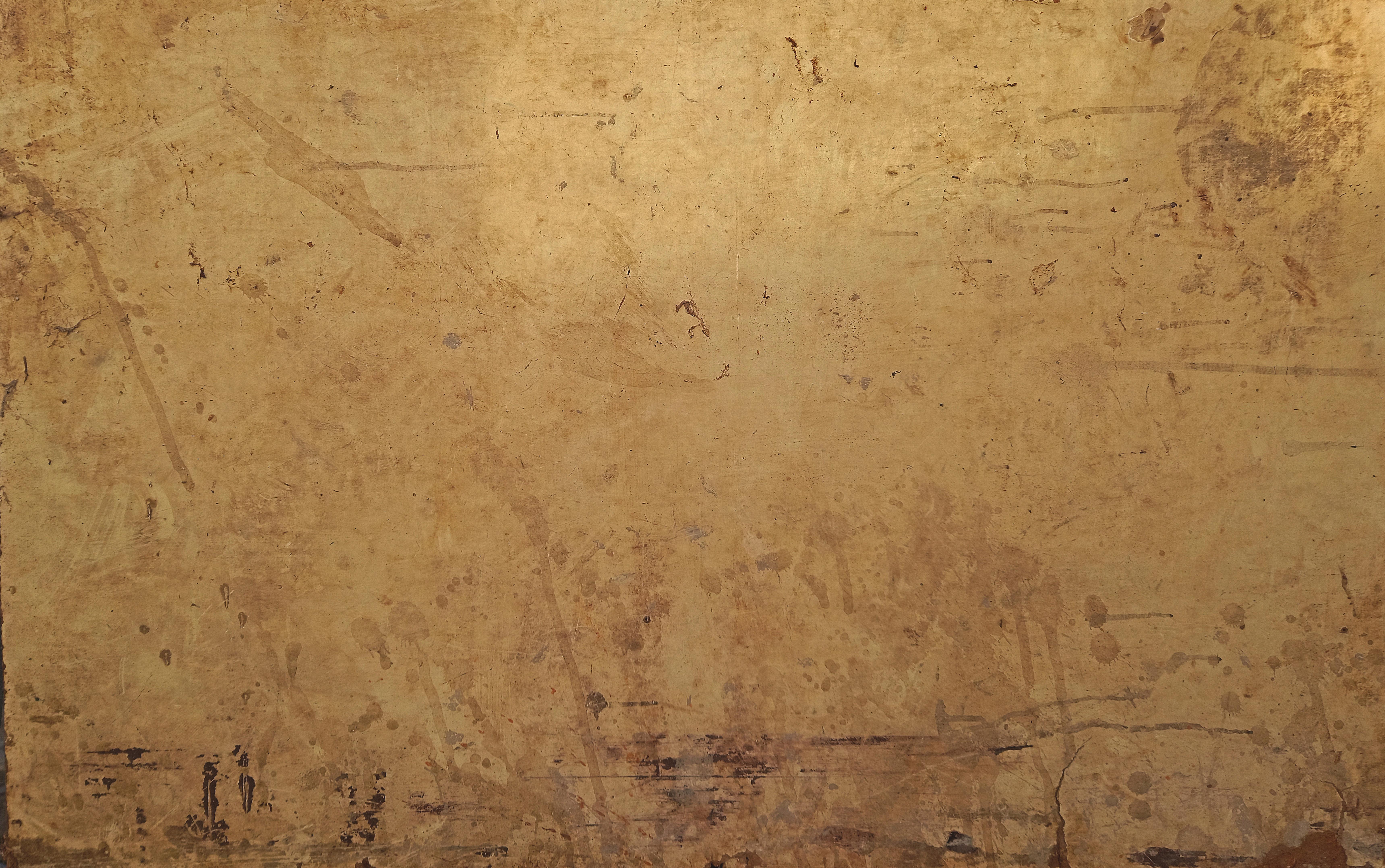








Hojojutsu is a traditional Japanese martial art of restraining that encompasses different school techniques. It is a unique product of Japanese history and culture and is rarely practiced outside Japan. It is part of the curriculum under the aegis of bugei and in jujutsu. There are very few videos or books available on this art. Shihan Allen Woodman teaches you hands-on each technique in a step-by-step format.



Good information to add to what is presented in







Sun Tzu said that Life Is War.
Scott Bolan believes that WAR is an Acronym for "We Are Ready"
As lifelong martial artists, we train not only the physical martial arts but also with an equal passion for the Mental, Spiritual, and Philosophical side of martial arts.
Mr. Bolan discovered the Mental side was being neglected, with only a cursory "be aware, grasshopper" approach being given.



The truth is, we can go our whole lives without being physically attacked, but we are mentally attacked every single day!
That's why he has developed a mental training program for martial artists called Mental Warfare Secrets.
Scott Bolan’s mission for over twenty years has been to empower warriors. He inspires to give you a powerful advantage in everything you do, so here are 37 Secrets of Mental Warfare you can learn and apply instantly.
1. Your emotional response transfers control to your attacker. Control your feelings and control the situation.
2. Do not let your mind be seized by thoughts, A quiet mind is a powerful mind.
3. When you control the ground (your mind), you control the battle.
4. People behave the way they do for one of the four Payoffs: Looking Good, Feeling Good, Being Right, or Being in Control. This is a huge key to motivation and persuasion!
5. Be aware of Conformity ploys, Fear ploys, status ploys, Lust ploys, Guilt ploys, Indebtedness ploys, and Discontentedness Ploys (All ploys come back to the 4 payoffs).
6. Conceal your rhythms and destroy their efforts. Don’t be predictable.
7. There are two kinds of people: Warrior and Peasants. Warriors are tactical thinkers. They think positionally. They are self-directed. They start with the goal in mind. Peasants are "herd thinkers". They seek to be directed. They start with how they "can't" in mind.
8. Television is Pablum for Warriors. Limit consumption of purposeless entertainment.
9. A Warrior is in the world, but he is not of it. You create your own environment.
10. Warriors go beyond thought. Overthinking slows you down.






11. It's easier to get what you want when you do not want it. Wanting it too much pushes it away.
12. You don't have to win every time, you just don't lose
13. Tactically use verbal mirroring. Match their tone and tempo.
14. With mirroring, you bypass their consciously objective attitude.
15. Do not plead, beg, or supplicate. To do so gives your power away.
16. Stay centered and in total control. Do not let yourself be emotionally or physically thrown off balance.
17. Pre-install the outcome you want by languaging. Words create outcomes.
18.Get past their objective mind and get into their subjective mind.
19. Most people are Group Thinkers, they want the safety of conformity and going along with everyone else.
20. Canned laughter gets the people laughing, like fishermen use baitchumming.
21. Cut your way through this world by using the Master-Keys of Mental Warfare and thinking and acting Powerfully.
22. Get behind the smoke, behind what they're saying to what they're really meaning.


23. Most people are constantly engrossed in mental chatter which has a tempo. Gain control and compliance by asserting a tempo. First harmonize, then re-direct
24. Never complain, explain, or apologize unless you truly need to, but rarely will you ever need to if you keep Control and Honor as your guides
25. Don't be drawn into conflict, drama, and verbal escalation.
26. People feign helplessness in order to get you to help them, and they feign ignorance in order to draw information from you.
27. Manipulators and liars only respect you when you thwart them, but they'll still resent you.
28. Turn a demand into a request. When they say, “Come over here,” you say, "Did you just Ask me to come over there?".
29. Be deaf to ultimatums and the tricks of those who try to make you serve them.
30. Never speak wordily. Too many words are less effective.
31. Can you honestly say, “I have my reasons, and they don't need your approval"?
32 Get over yourself enough to relax and let it happen! Mostly we get in our own way, and have limited thinking and vision
33. Without understanding your self, you cannot truly control any situation
34. Giving away information is giving away an advantage Be the one who holds the advantage.
35 Your Two Greatest Enemies are Fear and Anger.
36 The Way to Confidence is Tactical Aggression (read that again. and again. and again).
37. Combine possibility thinking with courageous action and elite tactics, and the world will be your playground
Use these methods and learn how they can be applied in almost any situation
Scott Bolan is a renowned Martial Artist, Trainer, Author, and Speaker. A martial artist with more than 40 of experience. A motivational speaker and peak performance coach for over 30 years.
Scott has empowered thousands of people to reach their ultimate potential.
You can subscribe to his empowerment newsletter at www.scottbolan.com









The History of Shiatsu in Japan Shiatsu, which translates to “finger pressure,” is a form of therapeutic bodywork from Japan that has roots in traditional Chinese medicine.

The history of Shiatsu in Japan is a fascinating journey of cultural exchange, adaptation, and innovation. Origins and Chinese Influence The foundations of Shiatsu can be traced back to ancient China, where Traditional Chinese Medicine (TCM) practices such as acupuncture and acupressure were developed.
These practices were based on the concept of Qi (or Chi), a vital energy that flows through pathways in the body known as meridians.

The goal was to balance the flow of Qi, thus ensuring health and well-being.
Introduction to Japan These Chinese healing practices were introduced to Japan between the 6th and 9th centuries through the exchange of cultural, religious, and medical knowledge. Over the centuries, the Japanese adapted and refined these practices, integrating them with their own traditional healing techniques and philosophies, such as those found in Anma (traditional Japanese massage).
Development of Shiatsu In the early 20th century, Shiatsu began to emerge as a distinct form of massage therapy under the influence of practitioners like Tokujiro Namikoshi.



Namikoshi developed a system of bodywork that focused on using finger and palm pressure to correct imbalances in the body, improve circulation, and facilitate the healing process.
Namikoshi founded the first school of Shiatsu therapy in the 1920s, and his methods gained recognition as a licensed therapy in Japan in 1955.
Another notable figure in the development of Shiatsu is Shizuto Masunaga, who introduced the concept of Zen Shiatsu. Masunaga expanded on traditional Shiatsu techniques, incorporating more holistic approaches that emphasized the psychological and spiritual aspects of healing, alongside the physical.
Shiatsu offers a range of benefits for individuals, both physically and mentally.


Here are some of the key benefits to shiatsu: on a patient













Tony B
That's a really good book. Picture, text, Everything is so detailed

Kennete Kleese
The book is understandable whether you are a beginner or advance student or professional of any style of massage


Barry Southam
Great text to add to your library
Learn the ancient art of shiatsu massage and its healing abilities.Relieve stress and aches while healing the body naturally through the Japanese art of acute finger pressure through this insightful and useful guide With full-color photos and artwork of the human anatomy and step by step practice guides to instruct you from student to fully certified practitioner. In Japan, the practice of finger pressure massage known as Shiatsu is a highly respected, professional skill that uses the meridians and blood flow to naturally heal the body Shiatsu can reduce tension and even alleviate health issues. Includes Test out portions of the text to gain full credentials in this amazing healing method from Asia
Language : English
Paperback : 299 pages
Dimensions : 7 x 0 71 x 10 inches


$69.95
a true




For decades, there has been controversy over "What is Jeet Kune Do?" Many versions have surfaced over the years, most of them watered down with personal interpretations that sometimes don't even resemble what Bruce Lee actually developed. Some just use the name as a commercial marketing tool.
I have no "interpretation " I still teach the original Jeet Kune Do, just as Bruce Lee and James Lee taught it at the Oakland school.
Bruce formulated JKD to be used strictly for actual combat, not for sports competition It is void of rituals and katas. It is comprised of three fighting systems: Wing Chun Gung Fu, Boxing, and Western Fencing. Bruce referred to his system as "scientific street fighting." From my years as a criminal investigator working narcotics, homicides, and organized crime, I can testify that JKD really works in street combat.
I present to you Bruce Lee's own definition of "What is Jeet Kune Do?" This is not someone else's interpretation; it is in Bruce's own words.
In 1971 I walked into the Oakland JKD school (which was in James Lee's garage) for my twice a week group class. But this time it was different. James had leaned against the wall a 4x4 foot piece of plywood which was painted white with very detailed and neatly hand painted words in black brush paint. This sign was actually made and written by Bruce himself.
James Lee the instructor, told us that next class we were to bring paper and pen and write down the text. He said that this was Bruce's own personal definition of JKD and for us to know and understand it. So now I share with you the contents of Bruce's own interpretation of Jeet Kune Do.
"Jeet Kune Do is training and discipline toward the ultimate reality in self-defense, the ultimate reality in simplicity
A true JKD man never opposes force or gives way completely. Be pliable as a spring. Be the complement not the opposition to opponent's strength.



July 2024 / Vol 1 - No 5
Make his technique your technique. You should respond to any circumstances without any prearrangement, your action should be like the immediacy of a shadow adapting to a moving object against the sun. Your task is simply to complete the other half of the oneness spontaneously. There is nothing to 'try" to do in the final stage of JKD; the opponent, self, and “techniques" are all forgotten.
Everything simply "flows." The true art of JKD is not to accumulate but to eliminate. Respond like an echo. Adapt like a shadow. Strike like an arrow. Totality and freedom of expression toward the ever-changing opponent should be the goal of all JKD practitioners. When you understand the root of JKD, you will know all of its manifestations.
I still have that handwritten copy that I wrote that night and feel that it is part of JKD history, as are many other documents and training notes that I acquired during my tenure at the Oakland school. I am so fortunate to have had the rare opportunity to learn JKD at the source. If you want to learn authentic JKD, contact me for seminars or private training. Learn JKD from someone who was actually there
About the Author:
Professor Gary Dill is one of the original JKD students (1971-72) of James and Bruce Lee’s Oakland school. He has been active in JKD for 53 years and taught thousands of students. He was appointed in 1986 to the JKD Society Board of Directors along with Linda Lee, Dan Inosanto, Taky Kimura, Richard Bustillo, and other original students.
Dill is the founder and chief instructor of the Jeet Kune Do Association which is the longest standing JKD organization in the world (1991-present.) He spent ten years in the military and served in Vietnam. He also worked another ten years as a federal and state criminal investigator working mainly narcotics, homicides, and organized crime
Professor Dill is a full time martial arts/JKD instructor and teaches seminars across the US and Internationally as well as giving private classes He can be contacted at email: pdilljkd@aol.com.
Website: www.jkd-garydill.com
- Learn the authentic JKD developed by Bruce Lee
- Taught by Gary Dill, 1st generation Oakland JKD student.
- Learn JKD punching, striking, low kicks, entering techniques, counter against blocks, block & counters
- Develop speed & proper techniques.
ContactProf GaryDilldirectly atpdilljkd@aolcom Website:www.jkd-garydill.com



Plot: In 2045 convicted criminals are given the opportunity to compete on the world’s #1 televised sporting event, Arena Wars They must survive 7 rooms and 7 of the most vicious killers in the country If they win, they regain their freedom.
Arena Wars is the latest indie actioner from Brandon Slagle (The Flood) and at a lean 90 minutes it is packed with fight scenes from beginning to end with arguably the best villain death I’ve seen since the 90s. Kudos to Slagle for bringing back this important element from the genre.
Arena Wars doesn’t have a massive budget and at times it is a little too darkly lit to see what’s happening in the fight scenes, but it doesn’t take away from some of the fantastic gore.

I love the outfits of the Arena Wars opponents who look like Mad Max and The Running Man extras crossed with Batman villains It’s hilariously violent with a huge body count and the characters are memorable too.
Bender is in prison having taken the fall for someone else in the Marines and he ends up fighting for his life in the Arena Wars. He reluctantly becomes a leader helping the other convicts try to survive and most of the movie involves all of them beating the shit out of the opponents in thoroughly satisfying fashion.
Overall, Arena Wars is proof you don’t need a huge budget to make a cracking fight film with some gruesome kills and the best bad guy death I’ve seen in years.




"Arena Wars" is a pulse-pounding action flick that harkens back to the gritty excitement of late 90s cinema. Starring heavyweights like Eric Roberts, Michael Madsen, and Robert LaSardo, this film delivers a high-octane spectacle that will leave you on the edge of your seat.
Directed by Brandon Slagle, "Arena Wars" transports viewers to a dark, neo-futuristic world where condemned prisoners battle for their freedom on a deadly TV show. John Wells stars as Luke Bender, a wrongfully imprisoned marine forced into this gladiatorial hellscape. Kevin Hagar delivers a chilling performance as the show's unscrupulous producer, who will stop at nothing to skyrocket the ratings.
Allen Woodman's Stunt choreography and fight choreography is spectacular. He also plays the head gladiator “Calypso” the dealer of death for the film
It features raw and visceral fight scenes with chainsaws, pickaxes, and machetes. The lack of special effects brings a refreshing realism to the brutal combat. It's a blast of martial arts mayhem crossed with Roman gladiators vs TV Wrestling at its best.
Produced by Sonny and Michael Mahal, the film's armor-clad gladiators are relentless killing machines, creating an atmosphere of relentless dread and unyielding action. "
Arena Wars" encapsulates the very essence of what action movies should be thrilling, relentless, and intensely entertaining. Available on major streaming platforms, this 2024 release is a must-see for fans of adrenaline-fueled entertainment.














